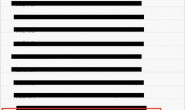|
内存问题: 该段随机检出内存异常的代码段如下: - (UITableViewCell *) tableView:(UITableView *)tableView cellForRowAtIndexPath:(NSIndexPath *)indexPath {
static NSString *CellIdentifier = @"Cell";
UITableViewCell *cell = [tableView dequeueReusableCellWithIdentifier:CellIdentifier];
if (cell == nil) {
cell = [[[UITableViewCell alloc] initWithStyle:UITableViewCellStyleDefault reuseIdentifier:CellIdentifier] autorelease];
}
NSString *cellText = [NSString stringWithFormat:@"音频文件%d",(indexPath.row +1)]; //内存溢出
cell.textLabel.text = cellText;
if ([cellText isEqualToString:selectText]) {
cell.accessoryType = UITableViewCellAccessoryCheckmark;
thisIndexPath = indexPath;
}
return cell;
}
异常问题: 为何ios平台应用不建议我们使用异常? 另: ———————- |
|
 |
我自己顶一下。
|
 50分 |
JAVA的异常处理本身就不好。
所以自然IOS没有必要学不好的东西。 C/C++的异常处理很好的可以在IOS下工作。 关于开启僵尸和日志。 你可以在项目的Edit SCHEMA和Build的一些设置中修改和开启。 |
 20分 |
开启僵尸:
方法一,添加环境变量, 在菜单中,选择Product->Edit Schema, 选择Run (App Name), 在Arguments下面的Environment Variables中,添加NSZombieEnabled, Value值为YES。 方法二,打开Diagnostics, 同样在菜单中选择Product -> Edit Schema, 选择Run (App Name), 在Diagnostics下,打开Memory Management下的Enable Zombie Objects |
 |
回三楼,我用了方法一无明显效果。。。。
方法二Memory Management下没有Enable Zombie Objects勾选框。 |
 15分 |
代码无内存泄露,有时工具会显示不对。
|
 15分 |
不过这个instrument里面有的地方还真没看懂,有的地方显示的好奇怪,也请高手能否对Instrument来个指点
|




